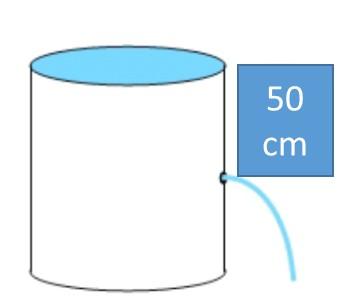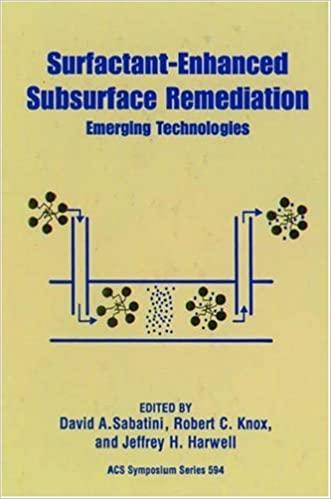Question
A styrofoam cylinder, filled with mineral oil (density 0.87 kg/m 3 ), used for buoyancy experiments sits on a table. The cylinder has a diameter
A styrofoam cylinder, filled with mineral oil (density 0.87 kg/m3), used for buoyancy experiments sits on a table. The cylinder has a diameter of 20 cm. Your cat pokes by mistake a small hole (diameter of 5 mm) through the side of the cylinder, 50 cm below the top of the water surface. Take g as 9.8 m/s and consider that the room not climate controlled and the room temperature sits at a relatively uncomfortable 40oC. The dynamic viscosity of the mineral oil is taken as 60 mPa.s at that temperature.
The general structure of the reservoir is shown in Figure 2.

Q1 What is the speed of the fluid emerging from the hole considering that the change of level on top of the cylinder is negligible?
Q2 Is that assumption correct though and can you neglect the change in liquid height in the column? Recalculate the velocity by accounting for the change and considering that V1 = 0.2 m/s and discuss the difference between the two levels after 1 s of free flow across the hole.
Q3 Let us now assume that the cylinder was filled with ethanol as opposed to mineral oil, which has a density of 0.8 kg/m3 and a viscosity of 0.794 mPa.s. Discuss the difference in behaviour between the two systems, assuming that the geometries are unchanged.
Q4 Ethanol is very volatile and would evaporate at a rate of 10 g/min for this cylinder geometry given its relatively high vapor pressure of 50 kPa at 40oC. Knowing the density of ethanol, discuss how the velocity of discharge would change considering the non-negligible height change.
50 cm
Step by Step Solution
There are 3 Steps involved in it
Step: 1

Get Instant Access to Expert-Tailored Solutions
See step-by-step solutions with expert insights and AI powered tools for academic success
Step: 2

Step: 3

Ace Your Homework with AI
Get the answers you need in no time with our AI-driven, step-by-step assistance
Get Started


